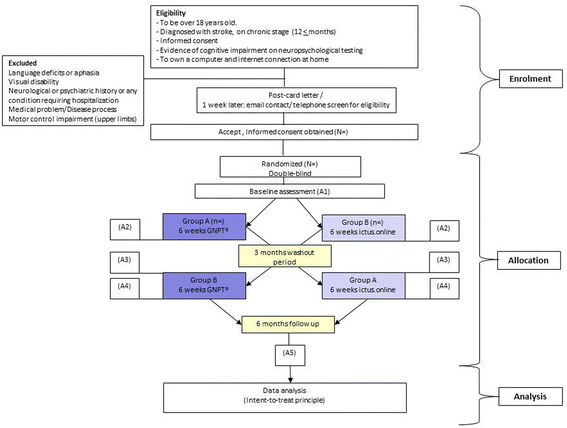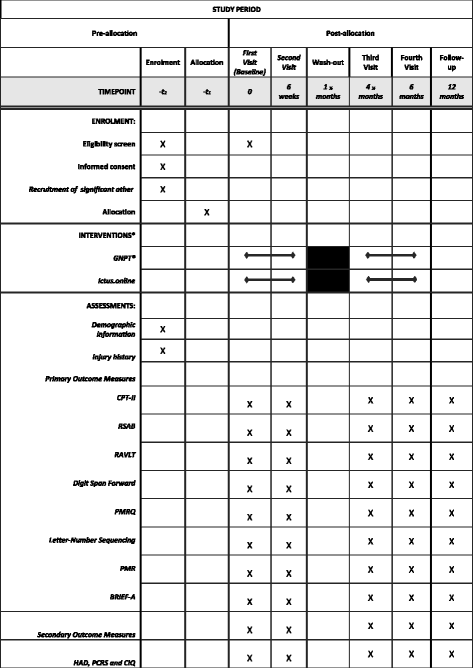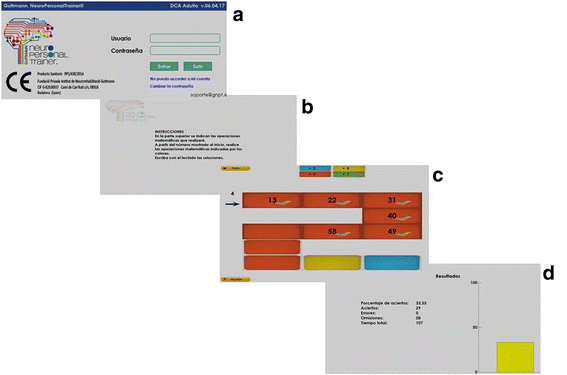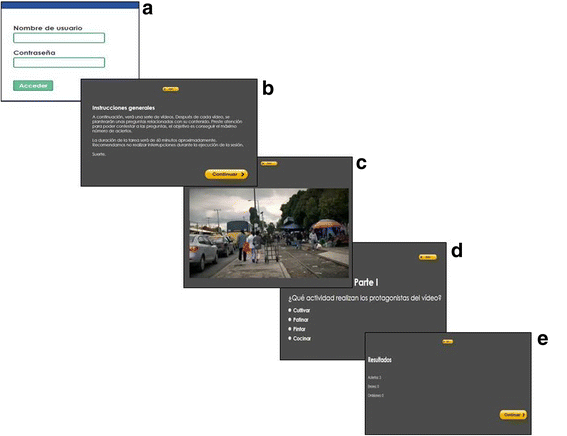A customized home-based computerized cognitive rehabilitation platform for patients with chronic-stage stroke: study protocol for a randomized controlled trial
- PMID: 29566766
- PMCID: PMC5863836
- DOI: 10.1186/s13063-018-2577-8
A customized home-based computerized cognitive rehabilitation platform for patients with chronic-stage stroke: study protocol for a randomized controlled trial
Abstract
Background: Stroke patients usually suffer primary cognitive impairment related to attention, memory, and executive functions. This impairment causes a negative impact on the quality of life of patients and their families, and may be long term. Cognitive rehabilitation has been shown to be an effective way to treat cognitive impairment and should be continued after hospital discharge. Computerized cognitive rehabilitation can be performed at home using exercise programs that advance with predetermined course content, interval, and pace. We hypothesize that computerized rehabilitation might be improved if a program could customize course content and pace in response to patient-specific progress. The present pilot study is a randomized controlled double-blind crossover clinical trial aiming to study if chronic stroke patients with cognitive impairment could benefit from cognitive training through a customized tele-rehabilitation platform ("Guttmann, NeuroPersonalTrainer"®, GNPT®).
Methods/design: Individuals with chronic-stage stroke will be recruited. Participants will be randomized to receive experimental intervention (customized tele-rehabilitation platform, GNPT®) or sham intervention (ictus.online), both with the same frequency and duration (five sessions per week over 6 weeks). After a washout period of 3 months, crossover will occur and participants from the GNPT® condition will receive sham intervention, while participants originally from the sham intervention will receive GNPT®. Patients will be assessed before and after receiving each treatment regimen with an exhaustive neuropsychological battery. Primary outcomes will include rating measures that assess attention difficulties, memory failures, and executive dysfunction for daily activities, as well as performance-based measures of attention, memory, and executive functions.
Discussion: Customized cognitive training could lead to better cognitive function in patients with chronic-stage stroke and improve their quality of life.
Trial registration: NCT03326349 . Registered 31 October 2017.
Keywords: Chronic; Cognitive impairment; Computerized cognitive rehabilitation; Randomized controlled trial; Stroke.
Conflict of interest statement
Ethics approval and consent to participate
Ethics approval has been received from Care Ethics Committee of Fundació Institut Guttmann. Informed consent from all participants in the study will be obtained.
Consent for publication
Not applicable.
Competing interests
The GNPT® is partly property of Institut Guttmann. JS, AGM, RSC, and JMT have been involved in the development of the GNPT®.
Publisher’s Note
Springer Nature remains neutral with regard to jurisdictional claims in published maps and institutional affiliations.
Figures




References
-
- Donaghy M. Brain’s Diseases of the Nervous System. 12. New York: Oxford University Press; 2009.
-
- Lezak MD, Howieson DB, Bigler ED, Tranel D. Neuropsychological Assessment. 5. New York: Oxford University Press; 2012.
-
- Sacco R, Kasner S, Broderick J, Caplan L, Connors J, Culebras A, Elkind M, George M, Hamdan A, Higashida R, Hoh B, Janis L, Kase C, Kleindorfer D, Lee J, Moseley M, Peterson E, Turan T, Valderrama A, Vinters H. An updated definition of stroke for the 21st century: a statement for healthcare professionals from the American Heart Association/American Stroke Association. Stroke. 2013;44:2064–2089. doi: 10.1161/STR.0b013e318296aeca. - DOI - PMC - PubMed
-
- Krishnamurthi R, Moran AE, Feigin VL, Barker-Collo S, Norrving B, Mensah GA, Taylor S, Naghavi M, Forouzanfar MH, Nguyen G, Johnson CO, Vos T, Murray CJ, Roth GA. Stroke prevalence, mortality and disability-adjusted life years in adults aged 20-64 years in 1990-2013: Data from the Global Burden of Disease 2013 Study. Neuroepidemiology. 2015;45(3):190–202. doi: 10.1159/000441098. - DOI - PubMed
-
- World Health Organization . Regional Office for the Eastern Mediterranean. 2017.
Publication types
MeSH terms
Associated data
Grants and funding
LinkOut - more resources
Full Text Sources
Other Literature Sources
Medical

